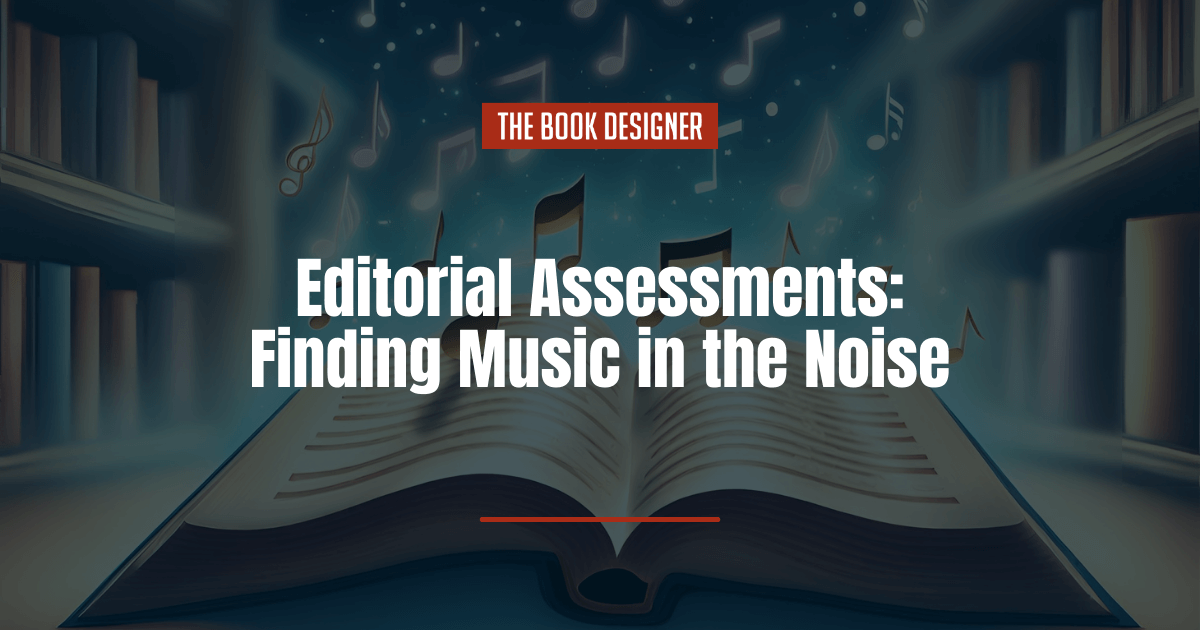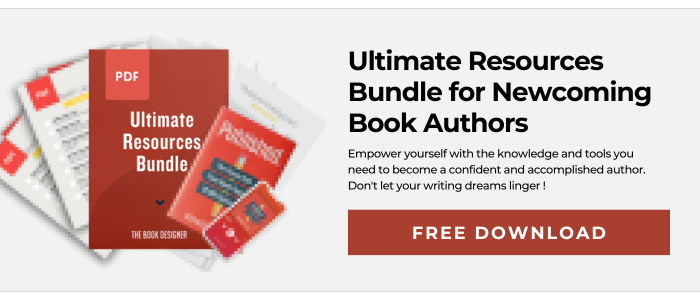One of the biggest mistakes I see authors make is jumping into line editing and proofreading of manuscript drafts that still have room for developmental growth. Don’t get me wrong—a book can be transformed in important ways during editing focused on language choices, sentence structure, grammar, and punctuation. But that kind of work is sophisticated, the fine-tuning of an instrument already producing beautiful music. Too often, I see authors paying for line-level edits when their manuscripts are still more cacophony than symphony.
So if authors shouldn’t focus on line editing, what should they focus on? The most valuable editorial intervention for authors—novice and professional alike—is an editorial assessment. The assessment (aka manuscript critique) evaluates the core elements of your novel:
- premise
- plot
- setting
- characterization
- conflicts
- pacing
- tension
- diction
- world-building
- other fundamentals of cohesive story production
An assessment can provide high-level feedback on nuanced issues like the treatment of time in a manuscript, or touch on more foundational elements like authentic character-building and plot continuity.
Here’s what you need to know about editorial assessments and what they can do for your book:
What an Editorial Assessment is Not
Before I elaborate on what an editorial assessment is, when it’s most useful, and how much it will likely cost, I want to clarify what the assessment is not. A good editorial assessment from a trained professional editor is NOT a beta read. Beta readers provide feedback based on their personal experience relating to your book; an editorial assessment is an in-depth analysis of your manuscript from someone who’s made a serious study of the art of writing and storytelling, and can understand not only what your story is in its current form, but what it aspires to be—what it can become. Both forms of feedback can be valuable, but the editorial assessment has the edge when it comes to high-level, objective critique.
An editorial assessment is also not a line edit. While it may point out specific sections or paragraphs within your manuscript that need help in terms of the way they’re written, it’s not going to give you line-by-line feedback on your grammar, spelling, punctuation, or vocabulary. You’ll need to hire a copyeditor for that.
A Tough-Love Letter
At its heart, the editorial assessment is a love letter from editor to author. Let me rephrase: The editorial assessment is a tough love letter from editor to author.
It all starts with a close reading of your manuscript—meaning:
- an editor actively takes notes
- analyzes text
- assesses content as she reads
There’s no right or wrong way for an editor to approach this phase, as long as the process leads to her pervasive understanding of your manuscript’s strengths and weaknesses.
With the insight she’s gained from the close reading, your editor constructs a report or “edit letter” detailing her findings. This is where that “tough love” idea comes into play. Like all professional critiques, editorial assessments should never be rude, snarky, sarcastic, or dismissive—but they should lay bare the problems in your manuscript, even if that means dismantling your core premise or recommending the ruthless killing-off of a beloved darling. The thoughtfulness, creativity, and careful attention an editor brings to your manuscript is its own kind of love—a sometimes harsh, but always constructive kind.
What an Editorial Assessment Contains
While each editor may approach at editorial assessment a little differently, there are a few commonalities that any good assessment will include.
Plot and Structure Evaluation: The editor will assess the overall structure of the book, including the plot’s coherence, pacing, and whether it effectively engages the reader. They’ll point out any plot holes or inconsistencies as well as potentially make suggestions for how the structure of the book could be improved. In non-fiction, they’ll analyze the way your information is organized and how that could be improved.
Character Development: Editors analyze the depth and consistency of the characters, ensuring that they are relatable and well-rounded. They may point out characters who are stereotypical, those who aren’t fully developed, or characters who don’t seem to have a purpose in the novel.
Writing Style and Tone: Editors evaluate the writing style and tone to maintain the author’s voice while enhancing clarity and readability. They may note areas where the style and tone are inconsistent or even recommend a different style or tone for the work to adhere to genre standards.
Grammar and Language Usage: While an editorial assessment is not a line edit, editors may identify overall issues with grammar, punctuation, and language usage issues to improve the manuscript’s quality.
Point of View and Dialogue: The assessment often includes feedback on the use of point of view and dialogue to ensure they serve the story effectively. The editor will address any areas where the POV is inconsistent or where dialogue could be improved.
Marketability: Editors provide insights into the book’s market potential, target audience, and suggestions for making it more appealing to readers in the chosen genre. Just remember that not all editors are marketing experts. Keep in mind your goals for your book. If you’re trying to publish a best-seller, then you’ll want to make sure that marketability is kept top of mind while you’re writing. But if you’re writing for a particular niche and sales volume isn’t as important to you, then these marketability tips may not be as vital to adhere to.
Overall Feedback: An editorial assessment generally concludes with an overall critique, highlighting strengths and weaknesses and providing recommendations for improvement.
When, Why, and Who
When is the best time to seek out an editorial assessment? The easy answer is…it’s complicated.
Fellow editor Scott Pack, a top provider of editorial assessments, notes how universally useful this kind of feedback can be:
Some authors want reassurance after an early draft that they aren’t barking up the wrong tree. Others may be on a third or fourth draft and are a bit stuck and want some guidance. Still others are pretty much ready to submit but want the security of an industry professional’s approval before sending to agents or publishers.
For authors working with early drafts, the feedback in an editorial assessment might lead to a total rewrite; for more polished drafts, an assessment might focus on high-level insights about thematic development or character dimensionality. In either case, the editor should offer clarity about what your manuscript is doing well, where there’s room for improvement, and how you might go about making changes.
A caveat: Not every manuscript—or author—is ready for this kind of critique. Even an early draft must be somewhat solid. Before seeking out an editor, make sure your manuscript demonstrates coherent grammar, structure, diction, and plot. Take time to do some self-editing of your manuscript to make it as amazing as you can on your own before undertaking an editorial assessment.
Authors still finding their way in the fundamental craft of writing are better served by intensive programs of reading good-quality literature or taking advantage of the many free online resources available to help writers build basic skills.
Cost of an Editorial Assessment
Reedsy recently published an analysis of the costs associated with self-publishing, which revealed an average editorial assessment price of $900 USD for 80,000-word manuscripts. That might seem steep for an editorial service that doesn’t include line-level corrections, but consider this: Hiring an editor to proofread a manuscript that has inherent developmental problems is a waste of time and money.
I recently consulted with an author who had spent thousands on line-level edits…only to have me tell him that his YA novel was actually Middle Grade. Once he realized the truth of that revelation, he was faced with the task of cutting about 40,000 words from his manuscript—40,000 words he’d already paid to have proofread.
Though you’ll encounter a range of prices from freelancers, expect to pay between $10-12 USD per 1,000 words for an editorial assessment. In exchange, you should receive a fairly lengthy edit letter. Scott Pack and I average 3,500-5,000 words for editorial assessments (that’s 7-10 single-spaced pages, or 14-20 double-spaced). Both of us also include a post-critique conference in the cost of the assessment, which is sometimes the most valuable aspect of the collaboration. Via phone or Skype, my authors and I discuss:
- the feedback
- brainstorm revisions
- address questions and concerns
- strategize how to proceed toward the author’s publishing goals
Not every editor includes this kind of conferencing in their contract, but at the very least you should have an opportunity to ask questions via email. You can also request a Skype or phone conference at the freelancer’s hourly consultation rate if a conference isn’t included in the original scope of work.
Be Choosy
Think you’re ready for an editorial assessment? Narrowing the field can be tricky. Experienced editors should be able to provide you with a sample edit letter for your review, which should help you find someone whose critique style and insight resonate with your sensibilities. Since most freelancers won’t take on projects without first reading a short sample of your work, you should also pay close attention to any early feedback the editor provides in her proposal.
- What’s this person’s strategy?
- How will she process your work?
- How long will the editorial letter be?
- How long will it take to produce?
Finally, don’t hesitate to ask for a reference; talk to authors the editor has worked with in the past if you’re unsure, and as always, voice your questions or concerns up-front so your editor knows what matters to you.
An editorial assessment can help you find the music amid the noise of an early draft, or fine-tune subtle harmonies in more polished manuscripts. Wherever you are in your work, consider the value of editing the big picture before you get bogged down in line-level concerns. Your manuscript—and your wallet—will thank you.
Editor’s note: This article was originally written by Rebecca Faith Heyman in 2016 and has since been updated and revised by The Book Designer editorial team.




